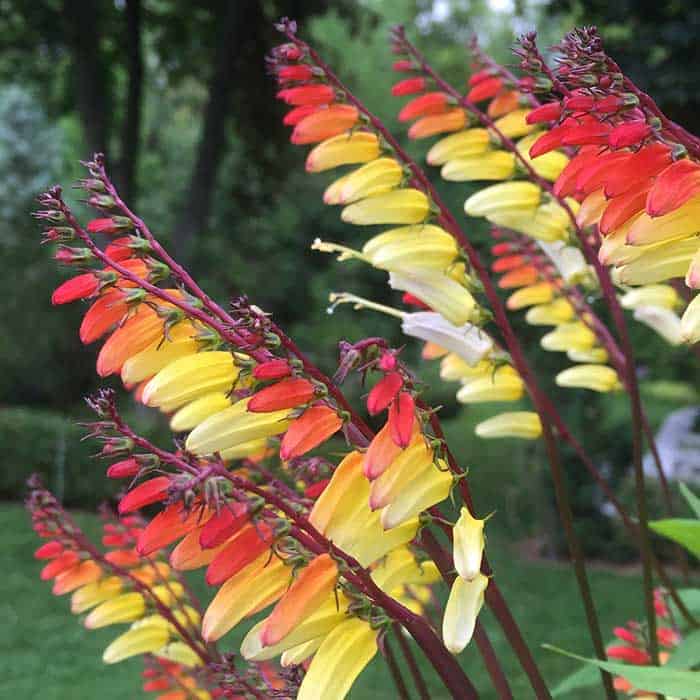
Annual vines are easy to grow and well-behaved, and most have intriguing blooms that last all summer. My current favourite is Spanish flag vine (Ipomoea lobata), a.k.a. firecracker vine. Small, tubular red and gold blooms are lined up in a row along short, wiry stems that arch out from the main stems. The effect is reminiscent of fringe or tiny flags, fluttering in a breeze. The plant has a third common name, exotic love vine, but I wouldn’t dare hazard a guess as to how it acquired that moniker.
Like many annual vines, Spanish flag makes a good container plant, growing about six to 10 feet (1.8 to 3 m) tall, depending on the length of your growing season. I have two in a large (24- by 24-inch/ 60- by 60-cm) pot, twining up a tall obelisk. A few orange bidens fill the bare ankles of the vines and trail over the edge. I’ve also paired it with orange and yellow calibrachoas.

I usually find started plants in well-stocked nurseries in late spring and plant them out once all threat of a late frost is gone. If growing from seed, start early indoors; seed takes two to four weeks to germinate. Rough up the thick seed coat or soak for a few hours in lukewarm water and follow the sowing instructions on the seed packet.
Spanish flag prefers full sun, heat and soil that’s consistently moist (but not soggy). Plants don’t seem to attract insect pests, but they do attract hummingbirds, another reason I always save space on the patio for a few vines. The most negative observation I can make is that toward the end of summer, the foliage — especially near the base of the plants — may look a tad scraggly.
Unlike many flowering perennial vines, annual vines grow quickly, covering an arbour or trellis in a month or two, before dying away once frost hits them, leaving a clean slate for next season — a chance to try something new!









Do I gather the seed pods on Spanich flag when they are green or wait until they turn black?
Can you buy the seeds for Spanish Flag in Canada?
Hi Mary Lynn, Yes you can buy them in Canada. William Dam Seeds for example has them. http://www.damseeds.ca/productcart/pc/viewCategories.asp?idCategory=927
Thank you!
FYI, Anything Grows also has seeds:
http://www.anythinggrows.com/index.php?route=product/search&search=spanish%20flag
I started by seed the Spanish Flag Vine. I was so impressed. The flowers are gorgeous. I definitely will start more in the spring.